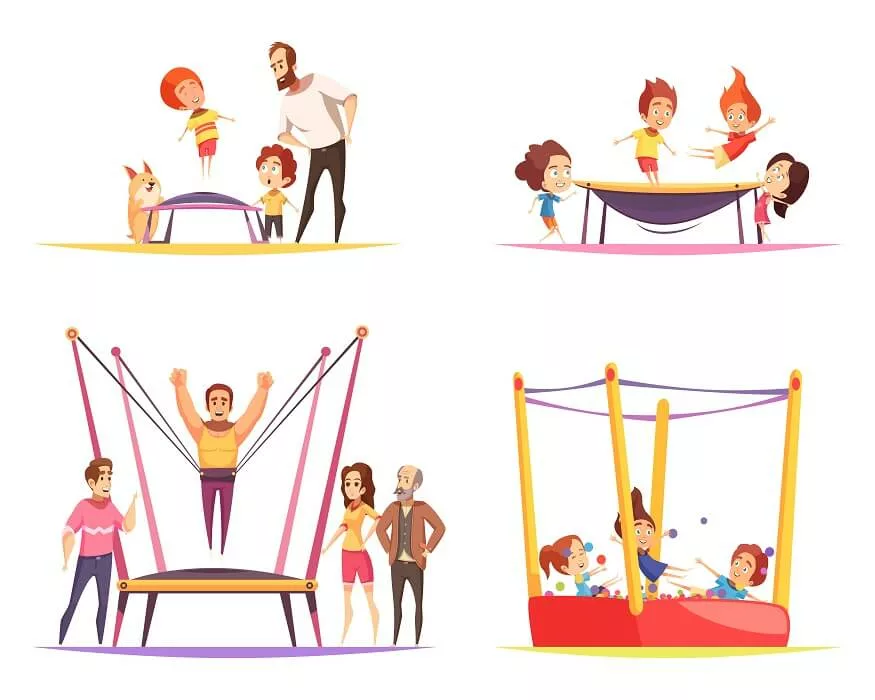In a world dominated by screens and gadgets, indoor bowling with miniature pins has emerged as a delightful recreational activity for indoor entertainment. This fun-filled sport simulates the traditional outdoor bowling experience on a more compact and accessible scale.
In this blog, we will walk you through the details of indoor bowling for kids.
Setting up indoor bowling
1) Space and materials
Indoor bowling is played on a flat, pre-defined rectangular surface, typically with a carpet that simulates a lawn’s smooth experience. The playing surface measures about 30ft in length and 6ft wide.
Whether you set up the indoor bowling area in your living room, a basement or a dedicated play area, ensure that it is free of any potential hazards, obstacles, sharp objects and breakable items.
For the materials, miniature indoor bowling usually comes as a set that includes miniature pins and a mini bowling ball. The pins are smaller and lighter than the traditional ten-pin bowling pins, providing an ideal option for all ages.
Most sets contain ten pins and one or two small balls, replicating the arrangement used in conventional bowling lanes. These sets are made from durable, child-safe materials to ensure safety during play.
2) Arranging the pins
Place the bowling pins at the end of your bowling lane. Use a lightweight bowling ball that is appropriate for children.
3) Bowling line
Mark the bowling line using masking tape or chalk. This ensures your child is starting at the same point at all times.
Also Read: How To Organise an Inter-School Sports Competition?
Bowling basics
This enjoyable game has a simple objective: knock down as many pins as possible with the mini bowling ball. Indoor bowling with miniature pins offers an opportunity for children and beginners to get acquainted with bowling concepts and techniques, enhancing their hand-eye coordination and strategizing skills. Below are certain key aspects to know about the game:
1) Holding the ball
Depending on their age, children could use a two-finger grip or a three-finger grip bowling ball.
2) Body position
Their feet should be shoulder-width apart, with their dominant hand (the hand they use to throw the ball) holding the ball at waist height.
3) Taking steps
A one-step or two-step approach is usually sufficient for kids. The key is to build balance and coordination.
4) Aim and release
Encourage your child to pick a target, such as the front pin, and focus on hitting it. Encourage them not to “throw” the ball but to gently release it toward the pins.
Also Read: Tips to Solve a Rubik’s Cube for Kids
Scoring
Indoor bowling typically engages two to eight players, either as individuals or in teams. The rules governing indoor bowling are similar to those of outdoor bowling. The goal of bowling is simple – to knock down as many pins as possible. The more pins you knock down, the more points you score.
A single game consists of 10 “frames”, with each frame consisting of two chances to knock down ten pins (except the last frame). Each pin you knock down earns you a point, while you can also score extra points by hitting “strikes” or “spares”.
A strike is when you knock down all ten pins on your first attempt in a single frame. Two strikes in a row are called a double, three strikes in a row are called a Turkey, while four and five strikes in a row are called four/five-bagger(s) and so on. A strike is commonly indicated with an “X”.
A spare is when you fail to knock down all ten pins on your first attempt in a single frame but manage to clear the remaining pins on your second attempt. A spare is commonly indicated with a “/”.
Spare: score 10 points + the number of pins you knock down for your first attempt at the next frame.
Strike: score 10 points + the number of pins you knock down for the entire next frame.
Also Read: Tips to Solve a Rubik’s Cube for Kids
Benefits of bowling
Indoor bowling is a fun, exciting, and highly beneficial activity for kids that not only offers entertainment but also contributes significantly to their overall development.
1) Physical benefits
Indoor bowling offers children a safe and comfortable way to be physically active. This low-impact sport is well-suited for kids because it carries a minimal risk of injury. Despite its low-impact nature, it still demands physical agility and helps in developing overall muscle strength and flexibility.
The game can significantly enhance children’s precision, focus, and coordination. Bowling requires players to carefully aim and adjust their force while throwing the ball, thereby improving a child’s hand-eye coordination. Regular exposure to this activity can also boost concentration levels, as kids learn to focus on their targets.
2) Social benefits
Indoor bowling lets kids have fun and make friends. Bowling alleys are exciting places where kids come together, play, and learn teamwork. Additionally, games like these can also help develop essential life skills such as patience, persistence, and learning to cope with competition healthily.
3) Mental benefits
Indoor bowling can be used as an outlet for relaxation and friendly competition or as a tool for family bonding. Indoor bowling keeps kids active and entertained, even when it is rainy or cold outside. Whether they are knocking down pins consistently or improving their scores over time, it creates a sense of achievement boosting their self-esteem and confidence.
Also Read: Conditioning Drills for Basketball Players
Indoor bowling remains an engaging and entertaining pastime suitable for all ages. It is a fun and convenient way to enhance skills, promote healthy competition, and stimulate a learning environment. Whether you are a novice or a seasoned player, indoor bowling guarantees an enjoyable, competitive, and social sporting experience. By making bowling a family activity or a part of your child’s routine, parents can lay the groundwork for a love of sports and a healthier lifestyle for their kids.
For more such interesting blogs, Visit EuroSchool.










